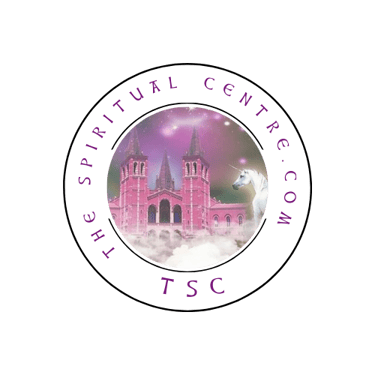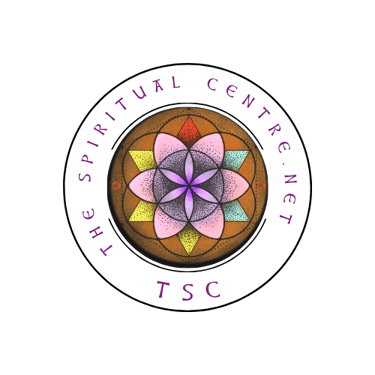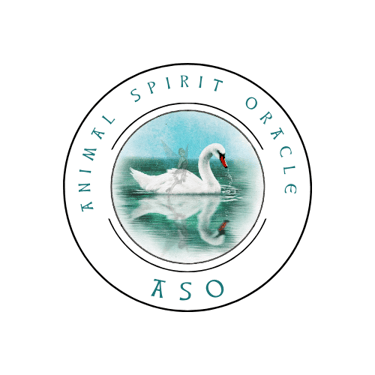The Spiritual Centre.co.uk
Celtic Gods and Deities
The Celtic gods and deities originated from the men, women, entities, and elementals that resided in the Celtic territories. The Celts significantly influenced neighbouring cultures, especially the Druids, as well as the Gauls, Norse, Greeks, and civilisations in the eastern Mediterranean region. These civilisations also influenced and contributed to one of the most remarkable cultures in Earth's history.
Many local societies throughout the Northern Hemisphere incorporated the rites and rituals of Celtic and Druidic traditions. The Celtic empire was one of the most successful civilisations in history. Bnwyfre, 'life force energy', was assimilated into local culture and incorporated and distributed through the practices of the Druids.
Celtic culture assimilated local gods, deities, totems, and entities into its belief system while also sharing its culture with local communities. The main reason for their continued success was their ability to be multicultural and to adopt and adapt at a local level.
Therefore, a variety of local totems and entities have been included here, along with their respective regions of origin where applicable.
We have alphabetised this list solely for ease of reference.
Branwen (Welsh)
Cailleach (Irish)
Cernunnos (Celtic)
Cronos (Greek)
Gwennefoedd (Welsh)
Branwen
Branwen embodies the gentleness of womanhood and carries out her duties with care. She encourages everyone who approaches her to embrace the love that can be found in all things. The romance of life encompasses the beauty, love and innocence in all that is seen and unseen. She is protected by life itself and the energies that wrap around and protect her. Following her failed marriage, she took a vow of chastity and servitude, and no man was ever allowed to lay eyes on her or be in her presence from that day forward.
She stands at the edge of the forest, her red hair shimmering in the glow of the new dawn. Her willowy frame is waiting to embrace life, encouraged by her own strength, character, nobility, majesty, and morality, when she will step forward and embrace fresh opportunity with love and passion as only she knows how.
To women left alone because of the savagery of war, she is a refuge; for the children, she is Mum. Creating havens and sanctuaries along the Welsh, Cornish, and Devon coasts, she brings peace, calm, and hope to those in need, the unfortunate victims of war.
She restores innocence with whispers of hope that will only be heard by those that need love; she is embraced by all that understand, surrounded by the murmurs of starlings, and protected by nature's beauty. She gives her love unconditionally.
Branwen is a Welsh deity forced into an arranged marriage to a king in Ireland; she was abused and escaped by training a starling to take a message to her brother Bran. He rescued her, and she spent the rest of her days hidden from the eyes of men and creating sanctuaries, nunneries, along the west coasts of Britain. (See: Birch)
Cailleach - Brighde
Cailleach, sometimes pronounced as Kar-li-arhc, a modern version of this name would be Colleen or Carly, is revered as the wise woman of Samhain, a time steeped in tradition and rich with mystical significance. She makes her grand entrance during this ancient festival, marking the onset of winter with an air of authority and wisdom that captivates all who celebrate. Her reign extends until Imbolc, a time when the Celtic world transitions towards warmth and renewal. As winter begins to wane, Brighde (Bridey) will take over and encourage all things to prosper in the warmer climate. Cailleach has been known to linger with the colder weather, with her presence felt as late as Beltane before retiring to her caves in the mountains of the North.
Cailleach is often depicted clad in a striking grey hooded cape that billows around her like clouds gathering for a storm. With each purposeful stride she takes while wielding her staff, she is said to create mountains that freeze into ice beneath her feet, an enchanting image that evokes both awe and respect for her power over the harshness of winter. Her appearance is strikingly ethereal; with flowing white hair cascading down her shoulders, pale skin reminiscent of freshly fallen snow, and piercing blue eyes that seem to hold centuries of wisdom within their depths, she embodies the archetype of the winterborne crone or hag.
This portrayal serves not just as a representation of age but also as an embodiment of resilience and strength inherent in nature’s cycles. Cailleach's presence reminds us that while winter may seem bleak at times, it is also a period for reflection and rest before the vibrant rebirth heralded by spring. In this way, she stands not merely as a figure from folklore but as an enduring symbol of life's cyclical nature, an essential reminder that change is inevitable and necessary for growth. Embracing Cailleach's essence allows us to appreciate both the beauty found in stillness and the promise held within each season's transition.
It is Cailleach who skilfully creates the paths for the deer, guiding them towards new pastures that are abundant with fresh food and providing them with essential shelter to protect them from the harshness of winter. This ancient goddess, often associated with nature’s fierce and raw elements, plays a critical role in ensuring the survival of these creatures during the coldest months of the year. Using her staff or hammer, she will forge paths through mountains, create coves within a rock face, and break the ice that covers lakes to ensure the animals under her care are loved, protected and can prosper even under the harshest of conditions.
Alongside her, the Holly Queen concedes to the Oak King, who makes his appearance at the Winter Solstice; he signals the start of longer days. The White Woman of the Woods, who comes from the birch forests, she who embodies wisdom and nurturing care for the stag, the deer and the sacred white eilidh. Druantia is the queen of the dryads who resides in the fir tree. Together, they stand ever-vigilant against nature's more brutal forces during winter's grip, reminding us that even in our darkest times, there exists a harmonious balance that supports life. Their watchful presence ensures that animals thrive and serves as a poignant symbol of hope and renewal amidst desolation.
Brighde first appears at Imbolc, where she is celebrated for bringing the dawn of a new day and for ushering in the wind from the East to replace the North wind. Cailleach concedes her hold gracefully, allowing Brighde to birth the lambs and the domestic animals within the household. Brighde matures with the moons into Brigid, a poet, healer, and smith. Her animals age with her; the boar cub becomes Torc Triath, and the oxen are revered forever in the archives of history as Mag Fea and Mag Femin. They would forever keep Ireland in good health. As a smith, her skills enabled a whistle for all women to call to each other when alone in the night.
As Beltane passes, it is Brigid who leads the charge of the seasons. The Holly Queen at Summer Solstice once more takes her crown, bringing with her shorter days and longer nights. The harvest brings with it Lammas (Lam-mass) and the gathering of the seed. Lug (Lugh) brings the gathering of the fruits, and Lughnasadh (Lugh of the afternoon sun) (Lu-na-sah).
Just as the arrival of Venus introduced Brighde in early spring, the arrival of Venus in autumn will bring back Cailleach, a gentle reminder that youth matures in an ever-ending cycle of life.
Samhain, a time when the seeds and fruits have been gathered and the livestock brought in from the fields. Samhain is marked by a ritual of blessings for the new year and the knowledge that Cailleach will once again act as a guide and wise woman through winter. (See: Birch)
Cernunnos
Cernunnos is one of the older gods worshipped before the rise of the Druids but respected and adopted because of his energy. He may be linked to Cronos due to his ties to nature's cycles and forest animals. Often depicted with antlers, Cernunnos embodies the spirit of wildlife and fertility, representing not just the harmony between humans and their environment but also the complicated equilibrium that defines life itself. His presence in ancient lore signifies a deep reverence for the natural world, highlighting themes of regeneration and growth. It's worthy to note the mythology and how various cultures have woven Cernunnos into their spiritual practices.
The Celts saw him as a protector of animals and a guardian of the forest's secrets, while others may have linked him to agricultural abundance due to his connection with fertility. This duality makes him a powerful symbol for those seeking guidance on both personal and environmental levels. In today's context, many individuals are rediscovering Cernunnos as an emblematic figure within modern paganism and nature-based spirituality. His teachings remind us to respect our surroundings, honour our instincts, and embrace our wildness, qualities often suppressed in our fast-paced lives.
Cernunnos originated in Britain and made his way across what we know today as Northern Europe; one such place here in Britain is Edzell Castle, Scotland, where local legend encouraged the nobleman of the time, in the 13th century, to create a plaque in his honour. The Rowan trees within the grounds are there in relation to a mystical gateway linking Elysium to Gaia. The quantity of wild animals locally is also a fitting tribute to the abundance of energy and the lore of attraction that resides within Cernunnos and his guardianship over the local area.
It is believed the iconography portrayed on the Gundestrup Cauldron is in tribute to Cernunnos, sitting cross-legged with horns growing from his head, a torc in hand and surrounded by creatures from the forest. This striking imagery offers a glimpse into the rich tapestry of ancient beliefs and the reverence held for nature and its spirits. Cernunnos, often regarded as the god of fertility, life, animals, wealth, and the underworld, embodies a profound connection to both the wild and mystical aspects of existence. His serene yet powerful presence reminds us of our relationships with nature—an intricate dance that has echoed through time. The creatures encircling him—the graceful stag, industrious boar, and curious hare—all serve as symbols of not just earthly life but also spiritual transformation.
Each animal carries its significance in folklore; for instance, stags are often considered messengers between realms due to their majestic antlers that reach towards the heavens. The torc he clutches may signify status or power among ancient tribes—a reminder that humanity has long sought connections with higher forces through symbols and rituals. As we study this artwork's meaning, we uncover layers of cultural identity intertwined with reverence for nature’s cycles—a theme that remains incredibly relevant today. By reflecting on such historical representations, like those found in the Gundestrup Cauldron, we can cultivate an appreciation for our shared heritage while fostering a greater understanding of how these beliefs continue to influence modern spirituality and environmental consciousness.
The Cernunni are a tribe of half-human and half-deer with Cernunnos as their leader. It is suggested that members of the tribe ventured across the northern hemisphere, establishing themselves as community leaders. (See: Birch) (See: Rowan)
Cronos
Cronos ruled the earth during the Greek 'Golden Age'. During this period, there was no immorality, and all living things adhered to their own sense of spirit and godliness. Old age and long life was frequent and followed by an afterlife as a guardian of earthly affairs from Elysium.
The concepts of the Son of Gaia (Mother Earth), nobility, peace, and harmony were central to all living beings; this mutual respect for life contributed to a youthful appearance for many, even as they aged.
In this golden age of peace, love, and harmony, people did not need to work, and instead, as beings of leisure, they fed on the abundance of food provided by Gaia.
Saturday in ancient Greece and many cultures throughout the northern hemisphere was celebrated as the first day of the week and associated with Saturn, with Cronus having been named after the ruling planet of this time. The winter solstice marked the transition from the longest shadow to longer days.
As man took precedence over the environment, greed and disharmony followed; the end of the 'Golden Age' in Greece coincided with the birth of the Iron Age in Britain. In Greece, Pan and his followers fled to Arcadia. These people are half human and half goat, and they are adorned in gold. In Britain, it was the Cernunni, half human and half deer, followers of Cernunnos, who retreated to the forests of Britain and then Northern Europe, all under the ever-watchful eyes of Gaia.
Gwennefoedd
Gwennefoedd is sometimes seen with red hair, sometimes with blonde, always with a wheel of the seasons, always with birds and frequently carrying bushels of leeks (Samhain) or daffodils (Imbolc). Sometimes accompanied by an earth-tied red dragon.
Gwennefoedd is likely to be found in the mists of dawn or dusk with Venus making an entrance in the east. She embodies love, fertility and fecundity, warm hearts, harmony and equilibrium. She embraces change and encourages new beginnings and transformation. She can be seen low on the horizon, her wheel spinning the clouds that transform the twilight.
Freya traverses the land at Imbolc, bestowing fertility upon the fields with love and affection to all living beings. Gwener was born under the light of Venus through the crescent moon on Freya's day. Nefoedd signifies originating from the heavens. Gwennefoedd is the Celtic goddess venerated at Imbolc when Venus manifests through the crescent moon.(See: Birch)
This page was last updated 1st Nov 2025

Copyright © 2004 - 2025 Bruce Clifton
The Spiritual Centre
Seaham,
County Durham, SR7 7
e- admin@thespiritualcentre.co.uk




This website was last updated 5th Nov 2025
